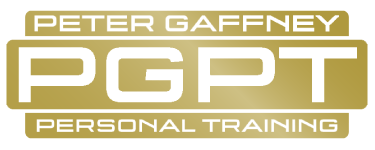[cs_content][cs_section parallax=”false” style=”margin: 0px;padding: 45px 0px;”][cs_row inner_container=”true” marginless_columns=”false” style=”margin: 0px auto;padding: 0px;”][cs_column fade=”false” fade_animation=”in” fade_animation_offset=”45px” fade_duration=”750″ type=”1/1″ style=”padding: 0px;”][cs_text]
What is posture?
Posture is how you position your body; it’s not just about standing up straight, but a key to your long-term health.
There are two types:
Dynamic Posture: Anything involving movement, walking, running, bending, jumping, lifting etc.
Static Posture: Anything not involving movement, standing, sitting, lying down.
The postures we assume during these activities can help or hinder our health and longevity. Some postural defects can be genetically predisposed or idiopathic (spontaneously occurring for unknown reasons).
Improving Posture
Habitual postures are linked to lifestyle-related factors, such as prolonged poor sitting positions. The body builds itself around the way you use it and on the demand’s you put on it. With this in mind here are a couple of strategies to improve your static and dynamic postures:
- Be mindful of your positions and posture:This takes a good degree of self-awareness from a physical perspective but also has benefits from a psychological one too. Taking the time to move with control or hold yourself in strong, stable positions will affect your confidence and self-efficacy (see TED Talks by Amy Cuddy on body language).
- Complete regular physical activity:
Regular exercise keeps muscles, joints, ligaments, tendons and bones strong and healthy. This can come in many forms but if we focus on weight training or resistance training, it’s important to work on posterior chain development (muscles on the backside of the body). Most commonly the ‘mirror muscles’ on the front side of the body are over-worked. They can also become stiff and tight with the regular sitting positions we assume for hours every day. I make it a point of training the pulling actions (horizontal and vertical pulling) 0.5 to 1x more than pushing actions. - Maintain a healthy weight:
Having extra mass to move around and hold in certain positions on a daily basis will put more stress through your joints. There is also a higher demand on muscles and soft tissues, which creates a higher risk of developing pain and poor posture. - Be aware of holding postures for too long:
We all move with various postures and we naturally revert to what’s comfortable. What we should be aware of is holding one position for too long, even positions we may see as positive can result in ischemic pain (lack of blood flow, shortage of oxygen to cells). For example, having a dead arm from lying propped up on your side for too long. We should make sure to move regularly whilst being sedentary for too long, e.g. moving every 20-30mins.
- Complete some form of daily mobility:
This can be in the form of yoga, a warm-up routine, mobility flow etc. This will help to keep your body supple, flexible and mobile whilst avoiding stiffness from prolonged sedentary positions. Most importantly it will enhance your body’s ability to function. Areas to focus on are thoracic spine, hips/glutes, quadriceps, hamstrings.
[/cs_text][cs_text]
Best Two Exercises for Posture
Deadlifts
The deadlift works nearly every muscle in the body. It’s fantastic for developing posterior chain strength and you need to have great technique and correct posture to do this movement effectively.
Face Pulls
Great exercise for strengthening the upper back and opening up the chest. These area’s can become tight and stiff if we’re quite sedentary throughout the day, especially sat at an office desk. Strengthening the muscles of the upper back will counteract that forward shoulder roll and allow the head to sit in the centre of your body.
Best Two Stretches for Posture
Side-Lying Windmill:
This is great stretch to open up the shoulder & thoracic spine. It’s done in a dynamic fashion to allow for full range of motion achieved as you complete the repetitions.
- Lie on your side with your arms stacked on top of each other and reached out in front of you. Have your top leg flexed and bottom leg straight. Have a roller or pillow under your head for comfort.
- Reach your top arm forward and swing it up and around your head until you hit your low back, you can then reverse the action to come back around or take your hand over your torso to start a new repetition. Keep the thumb as close to the floor as possible and open up your torso to allow for a deeper stretch.
[/cs_text][x_image type=”none” src=”https://pgpt.co.uk/wp-content/uploads/2019/02/Yudi-Stretching.jpg” alt=”” link=”false” href=”#” title=”” target=”” info=”none” info_place=”top” info_trigger=”hover” info_content=””][cs_text]ELDOA – T8/T9:
ELDOA is a form of spinal decompression stretches created by Dr. Guy Voyer. They are completed holding certain postures and creating a stretch through tension. They are quite challenging as you normally hold for 60 seconds, but they are very effective.
[/cs_text][x_image type=”none” src=”https://pgpt.co.uk/wp-content/uploads/2019/02/Yudi-Stretching-2.jpg” alt=”” link=”false” href=”#” title=”” target=”” info=”none” info_place=”top” info_trigger=”hover” info_content=””][cs_text]
- Knees bend to place heels as close to the hips as possible while maintaining a straight spine (If upright position can’t be maintained, use the support of a wall, or hold legs with arms)
- Raise both hands overhead and rotate them out to the side, extending the wrists and splaying fingers and palms. Keep arms in line with the torso. Push through the wrists. Imagine if you’re holding a big boulder over your head and you’re trying to push it upwards.
- Reach through the crown of your head. Imagine your head is being pulled upwards from the centre.
- Push feet actively into the floor and hold.
So, hopefully these small and easy to implement tips help your posture longevity and remember: for further advice and guidance, get in touch and we’ll be able to advise.
Yours in being tall and proud!
Yudi[/cs_text][/cs_column][/cs_row][/cs_section][/cs_content]


